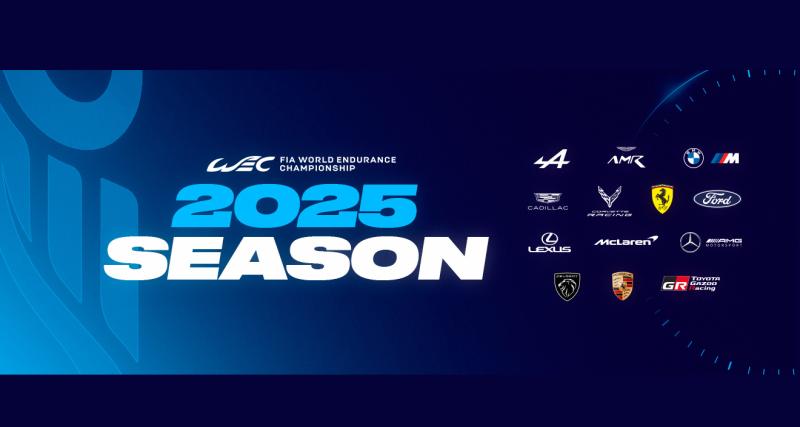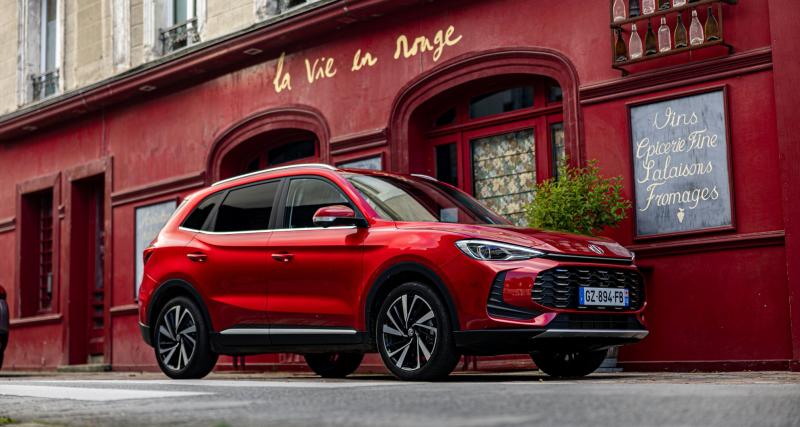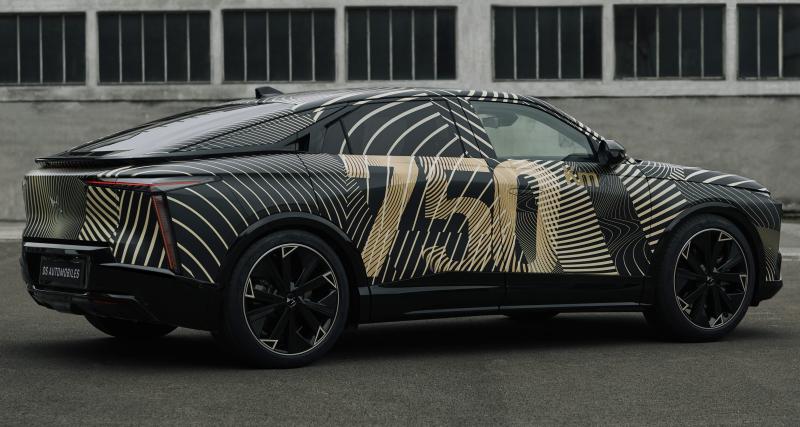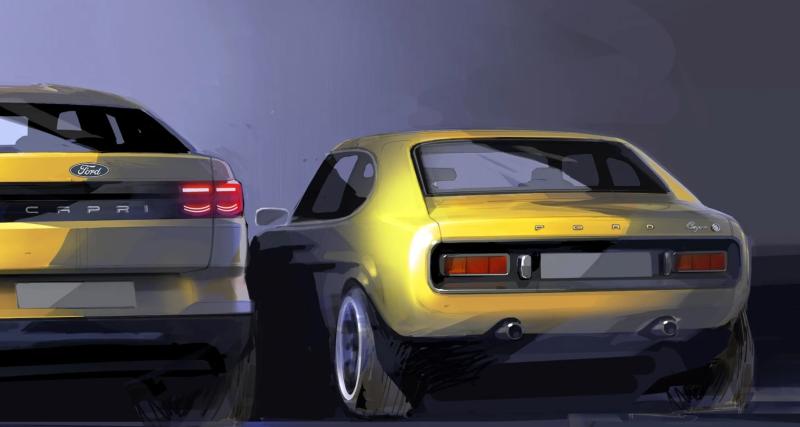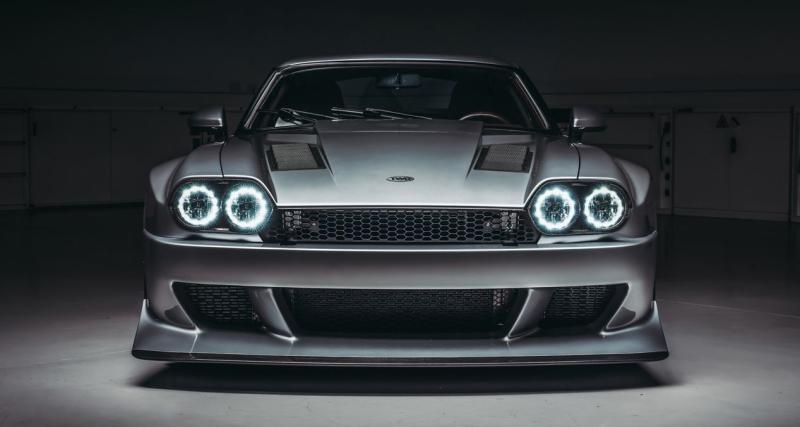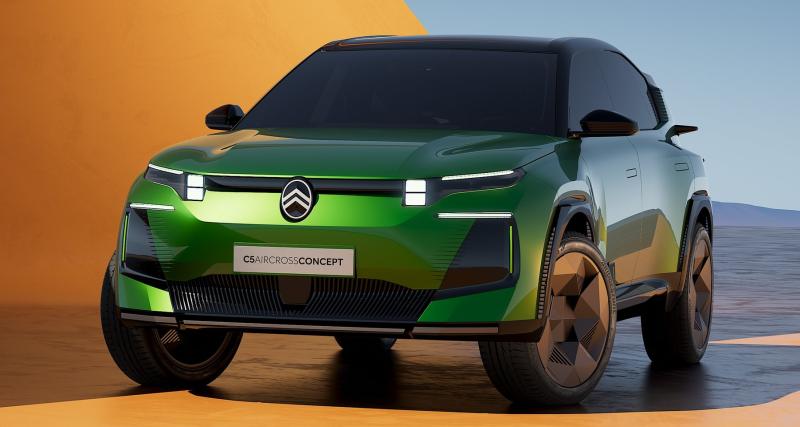Outre le salon de Bologne, lactualit� de ces derniers jours a �t� marqu�e par la rencontre au sommet des dirigeants des Big Three face au Congr�s am�ricain. R�action quasi-imm�diate dAlfred DiMora, le Pasqua de lautomobile am�ricaine, qui vient tout juste de communiquer sur sa vision des choses (tout en profitant de loccasion pour mettre en avant ses int�r�ts).
A en croire DiMora, la faillite dun des Big Three ne serait pas une grosse perte. Apr�s tout, les Etats-Unis en ont vu dautres, notamment apr�s la seconde guerre mondiale, lorsque la demande en armement a brusquement chut�. Les travailleurs ont alors �t� recas�s dans dautres domaines de lindustrie civile, ce qui a permis de relancer la consommation. DiMora conseille le m�me sc�nario si GM boit le bouillon. Relancer la production, oui, mais qui ach�terait�? Noublions pas que lAm�rique est surendett�e.
Un autre argument dans le sens dune faillite est que faillite ne signifie pas disparition. En effet, un d�mant�lement de GM, par exemple pourrait conduire � ce que chacune des marques soit reprise ind�pendamment, pour un meilleur encadrement qui pourrait relancer les performances. Bien vu. Dans ce contexte, Alfred DiMora semble donc plut�t ti�de en ce qui concerne le fait dallouer les 34 milliards de dollars demand�s par les constructeurs.
Concernant loffre produit, DiMora semble consid�rer les Big Three comme des bons � rien qui nont pas su sadapter � la demande des clients. Il leur reproche de ne pas avoir su �voluer assez vite, contrairement aux entreprises florissantes de la Silicon Valley, sp�cialistes de l�lectronique. Un manque de renouvellement, fatal selon lui. Question automobile, il cite en exemple Shelby, Saleen, Tesla et DiMora Motorcar, bien entendu. Ce sont, � son sens, des pr�curseurs en termes de technologie (il faudra quon mexplique en quoi un roadster Shelby Series One est innovant) Il reproche �galement aux Big Three, et cest l� que �a devient risible, de ne pas avoir su d�velopper des partenariats technologiques avec les fournisseurs. Et de citer en exemple son projet de limousine, la Natalia SLS2. Rappelons que celle-ci se r�sume pour linstant � un prix de 2 millions de dollars et un inventaire � la Pr�vert d�quipements d�lirants et inutiles. Aucun rapport donc avec les probl�matiques de grandes s�rie que connaissent les Big Three. Idem pour la pub, qui ne peut �tre partag�e avec les partenaires, limage des autos des Big Three reposant sur un savoir-faire centenaire, contrairement � DiMora qui na pour linstant aucune notori�t� et na produit que des Photoshop moches. Je vois mal Ford sortir un nouveau mod�le �conomique avec l�quipement � la DiMora�: pompe � mush, d�graisseur de glabougnot, tournicoteur de lombaires � bitoniot int�gr� et autre parachute � cendre de cigare.
Au final, DiMora parle beaucoup mais propose assez peu. Par contre, il a la bonne id�e de lancer une collecte de propositions, en esp�rant trouver un �cho au Congr�s. Voici le texte complet de son communiqu�:
The DiMora Initiative
An informed perspective on the proposed $34 billion bailout of
General Motors, Ford, and Chrysler
and
A forward-looking initiative and call to action to envision
the new American automotive industry for the 21st Century
Presented by
DiMora Motorcar
An Independent American Automaker
December 3, 2008
Overview
Drawing behind them the dark storm clouds of a threatened depression, America's automotive giants are pressuring Congress to act precipitously and bestow upon them billions of taxpayer dollars in order to prevent their slide into bankruptcy.
However, when viewed from the perspective of the 21st Century global automotive industry, their failure to address long-standing challenges calls into question whether a Congressional decision, made under such circumstances, has any realistic possibility of being the right decision for American taxpayers and the nation as a whole.
"It is only with new vision that we can learn from the lessons of Detroit's failures, and Silicon Valley's successes, to rethink, redesign, and rebuild a new American automotive industry for the 21st Century."
- Alfred DiMora, Founder, DiMora Motorcar
= = = = = = = = = = = =
The DiMora InitiativeSituation
The American automobile industry, as we know it, is in trouble. Detroit's historic Big Three manufacturers--General Motors, Ford, and Chrysler--have experienced decades of decreasing sales and declining profits. They have been blamed for contributing to global warming, and face increasing regulations and rising criticism for producing the wrong vehicles for our times, while being led by an outdated corporate culture.
These long-festering problems have recently been aggravated by a worldwide economic slowdown, the continuing global financial crisis, and wide fluctuations in fuel prices. These uncertainties have caused many would-be car buyers to change, delay, or cancel their automobile purchase plans.
With challenges coming from all sides, the Big Three, seemingly disowning any accountability and brushing aside the judgment of the marketplace, are now asking American taxpayers for a cash infusion of thirty-four billion dollars. They seek to persuade the American public that this will grant them the time and financial resources needed to fix their problems, save their companies, rescue American jobs, and fortify the American economy.
By doing so, Detroit is pressuring Washington with two bleak options: bailout or bankruptcy. Congress faces the difficult choice of allowing such threatened bankruptcies to occur, or providing, on uncertain authority, the Big Three with a potentially continuing stream of billions of dollars from the pockets of unwilling and skeptical taxpayers, who see neither a clear path to profitability nor any assurance that such a path even exists. Furthermore, although Congress is now requiring a specific plan showing a clear path toward long-term viability, the evaluation and oversight of any such plan would require of Congress the requisite ability to understand and surmount the many challenges of the automotive industry of the 21st Century.
It is true that many businesses and individuals have already suffered from Detroit's decline, and many more would be hurt by the collapse of one or more of these companies. In a predicament such as this, finger-pointing is all too easy. As President Kennedy stated over four decades ago, "Victory has a thousand fathers, but defeat is an orphan."
This is the right time to find a better way to rebuild the American automotive industry. The current crisis might best be seen as an opportunity to take a fresh look at what should be preserved, discarded, or created, in order to rebuild our American automotive industry, to be the best in the world.
At stake are billions of dollars of taxpayer money and the peoples' faith in their elected officials' ability to chart a wholly new, untested, and unknown course of government involvement in private enterprise during an ongoing economic crisis.
Realities of the 21st Century Automotive Industry
In identifying the realities that must be faced by a successful 21st Century American automotive industry, we are asking the question, whether systems that were productive in the 20th Century might still be expected to serve well in the 21st Century. We must also ask whether the Big Three are capable of making the necessary changes, once those changes are identified, or whether complexity and legacy burdens might prevent them from acting in time to prevent their demise.
Labor Costs
In order to be competitive, automotive manufacturers must seek to maximize the labor they receive for the costs they incur. Increasingly, labor is becoming a worldwide commodity that knows few boundaries. If a particular automotive component can be produced at the manufacturer's factory for $100, bought from a local supplier for $80, or contracted out to an overseas company for $35, there must be some other consideration to cause the company to choose the $100 option.
This is economic reality. If the "other consideration" is a tariff, a threatened strike, a government directive, or similar coercion, the net result is that the manufacturer must compensate by raising the price of the car produced. This reduces the competitiveness of the vehicle in the global marketplace and the quality and number of vehicles sold. It also reduces the need for employees at the factory, labor at the local companies that supply that factory, servers at restaurants near the factory, the value of stockholders' equity, etc.
Therefore, any analysis of the health of the Big Three must address this key issue of labor costs. For decades, the United Auto Workers union has succeeded in negotiating contracts with labor rates and benefits that most American workers would consider generous. Benefits are paid to many autoworkers, long after the cars they produced have been sold. Part of the cost of a 2009 automobile goes to pay for pensions and medical care to past employees who have not turned a wrench in this century.
Big Three management has observed this growing problem for decades. This is one reason they now buy parts and services, that in the past, they would have made themselves. Even if it costs more now to buy a door handle from a contractor, than to make it internally, the automaker knows it will not have to continue to pay benefits to the handle-maker's employees for decades to come. In most cases, the contractor's employees receive pay and benefits packages far less generous than UAW-negotiated Big Three compensation.
In recent years, Big Three executives have made some progress in limiting their labor costs in contract negotiations with the United Auto Workers. Legislation accompanying a Congressional bailout package could strengthen the Big Three's ability to exact further concessions from the UAW. Whether these tools would be as effective as the flexibility provided during bankruptcy restructuring is open to question.
Companies that are not hampered by past concessions to the UAW have better control over labor costs, work rules, etc. When auto companies such as Nissan, Toyota, BMW, Honda, Subaru, Hyundai, and Mercedes decided to build factories in the United States, they bypassed union-friendly Michigan in favor of states such as Tennessee, Kentucky, South Carolina, Alabama, Mississippi, Indiana, and Georgia.
It shouldn't surprise anybody that, while the Big Three are closing factories and facing possible bankruptcy in Michigan, Kia is building a $1.2 billion factory in Georgia, capable of producing 300,000 automobiles per year. Johnson Controls, Inc., the world's largest maker of automotive seats, is also building a plant in Georgia to support the Kia production. New automotive factories are also planned for Toyota in Mississippi and Volkswagen in Tennessee, in the next two years
Technology
The history of the automobile has been one of continuing innovation. Nevertheless, improvements are introduced very slowly in automotive lines for many reasons. In the present means of production, the costs of engineering a new automobile and preparing factories for mass production are so great that very large production runs are needed to amortize these fixed costs. As a result, a given model is often produced for years, with only minor cosmetic changes made to differentiate model years. Political climate, regulations, and even management attitudes can also slow innovation.
This may be contrasted with the high-tech world of digital electronics, an industry that understands the need to innovate and manufacture quickly, where the only constant is change. Companies know and embrace the fact that their products, facilities, processes, procedures, marketing, and organizations that produce their business success today must all be continually updated or replaced if they are to be successful in the next immediate business cycle.
In only a few decades, the supernova of Silicon Valley created over fifty thousand of the highest-paying jobs in America, and nearly half a trillion dollars in annual revenue. The Detroit auto industry is still trying to compete in 2008 using systems and ways of thinking that were obsolete decades ago. It is only now beginning to look to high-tech innovation and the elements that produce it for the keys to improving profitability. Yet, it is still failing to recognize, reproduce, or adapt the many innovations of Silicon Valley, whether in banking, venture capital, marketing, networking or management structures and incentives.
At the same time, Detroit's automotive industry has failed to respond rapidly enough to changing consumer demands, while suffering the consequences of what now appears to be a profound failure of vision. The attempts by Congress to increase Corporate Average Fuel Economy (CAFE) standards have been met with stiff resistance and delay, causing those standards to be set so low or pushed so far into the future as to make them virtually meaningless.
The Leadership Factor
Successful car companies thrive and grow when the leaders in charge of them are passionate about automobiles. When Lee Iacocca took over Chrysler, every Dodge truck customer knew who ran the show. Iacocca had a clear vision of what the company could become and how to achieve his goals. He built a team that shared his passion for creating great cars. Can the same be evidenced in the executive suites of GM, Ford, and Chrysler today? (How many Super Bowl Champions have a lawyer or accountant as the head coach?)
The same is true of any industry. It took the return of founder Steve Jobs to Apple Computer to recover from the earlier unsuccessful reign of Pepsi executive John Sculley.
What's most needed now is to restore the American automotive industry to global competitiveness. This is the vision and entrepreneurialism of America's independent automakers.
A Different Perspective on the Proposed $34 Billion Bailout
It should not be assumed that a massive cash infusion can solve the problems of Detroit and the American automotive industry. The consequences of any course of action will be impossible to predict, without first developing an informed perspective on the industry.
Much of the current debate assumes that the principal issue is the imminent demise of one or more of the Big Three automotive manufacturers. It is assumed that this would be disastrous for the American economy, and all Americans would suffer from the fallout. It is a fact that a complete shutdown of General Motors would lay off hundreds of thousands of employees, with similar layoffs at the thousands of businesses that either supply parts and services to GM and its employees, or depend upon the sale of GM products for their livelihood.
There are, however, historic precedents for the layoff of huge numbers of employees. At the end of World War II, the U.S. military terminated the employment of millions of men and women in uniform, and stopped buying huge numbers of tanks, trucks, ships, airplanes, bombs, etc. This was a far larger number of layoffs and plant closings than the current situation threatens, in a country with less than half today's population. Yet these people were absorbed into the civilian economy in a relatively short time and the economy grew. It is true that the closure of a Big Three company would be a disruptive and painful process for hundreds of thousands of workers and their families, but they and the nation would survive.
It is wrong to think that the bankruptcy, restructuring, or even closure of a Big Three manufacturer is a David Copperfield magic trick, where the automobile simply vanishes. Corporate assets are sold to companies that have uses for those assets, such as creating and marketing more automobiles. This process of selling off assets has been ongoing for many years, and includes Ford's sale of Jaguar and Land Rover, as well as GM's spinoff of Delphi in 1999, and more recently, its sale of Allison Transmissions and controlling interest in GMAC. If Washington chooses not to provide billions of dollars to the Big Three at this time, their restructuring or closure would likely lead to the sale of additional assets to outside companies that believe they can use those assets productively.
Would the loss of a Big Three manufacturer lead to a shortage of American-made automobiles? This is highly unlikely. There are other major manufacturers in the United States that would immediately take up the slack. Toyota, Honda, BMW, Hyundai, Nissan, Mercedes, and Subaru all make large numbers of automobiles in the United States. Some people might criticize that these are not really American cars, as their parent companies are foreign. There are at least two responses to this. Did those same people believe that Dodge and Chrysler products were not American cars during the years when Chrysler was owned by the German company, Daimler Chrysler? Ownership no longer has geographical limits; Americans buy stock in Honda, Daimler, and Toyota on the New York Stock Exchange every business day.
For taxpayers and Congress, many difficult questions remain. What percent of the jobs that will be saved are here in the USA, and what percent are in foreign countries? Will all of the funds provided be used for domestic operations in the USA? What is the proposed plan of oversight and accountability, on behalf of the taxpayer? This time, will the taxpayers know, in what amounts, and to whom these moneys are being distributed?
A New Vision
In the unprecedented matter of handing over billions of dollars of taxpayer money to beleaguered private companies, no avenue or perspective offering a way out of the present morass should be overlooked.
As one example, the costs of developing a new automobile do not all have to be borne by the manufacturer whose company name is on the car. DiMora Motorcar has demonstrated this, with the new Natalia SLS 2, now under development, where up to 150 inspired technology partners will ultimately be involved in investing their own innovations and resources in this new developmental model. These partners will be sharing in the publicity and marketing that the manufacturer obtains for the car, as well as benefiting from long-term production contracts and mass-market spin-offs, creating a dynamic, ongoing environment of innovation.
Preliminary discussions with many industry experts have convinced the leaders of the DiMora Initiative that a modern car company and its production facilities could be built for under two billion dollars, with a capability of delivering 400,000 cars a year by 2011. In light of this option, Congress must weigh the cost of a continual bailout against the real possibility of funding a new industry effort, led by the vision of independent automakers.
What then should be the future of the American auto industry in the 21st Century? That may depend largely on decisions that will be made over the next several months (or even weeks) by Congress and the new administration.
Many people are unaware that there are more than three American automakers. While they produce far fewer automobiles than the Big Three, this Initiative believes their innovations and vision to be of greater importance. Companies such as Shelby, Tesla Motors, Saleen, and DiMora Motorcar are pioneering new technologies and designs for building automobiles in the United States and marketing them to the world.
In order that the voice of these independent American automakers might be heard, the founder of DiMora Motorcar, Alfred DiMora, is establishing the DiMora Initiative. It is believed that only in this way will an outside perspective be added to what should be a national debate on the future of this vital national industry. Therefore, the DiMora Initiative is encouraging citizens and Congress, industry workers, independent auto companies and leading industry executives and innovators, to engage in a critical dialog to rethink the fundamentals of the American automotive industry in the 21st Century.
This is the kind of thinking, not unlike the NASA model, that has already created success at DiMora Motorcar. By unleashing the creativity of the best minds in the industry, unconstrained by the economics of the market and the production line, this company has been able to inspire a surge of innovation, producing significant new technologies that will ultimately find their way into the everyday automobile.
By following this course, not only might a new and prosperous American auto industry be built, but new insights will be gained for resolving the challenges of Detroit.
The DiMora Initiative seeks to speak to Congress on behalf of the independent American automakers and the American public regarding these vital issues.
We urge all concerned to add their voices to this Initiative, encouraging a deeper examination of these issues in the hope that we might successfully rebuild a new American economy for the 21st Century.











